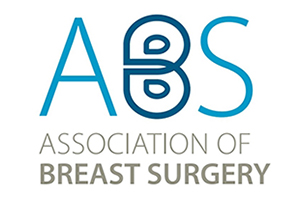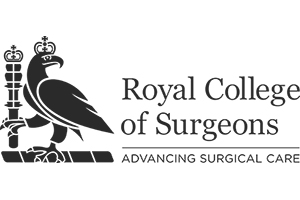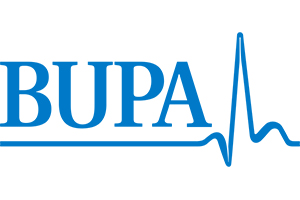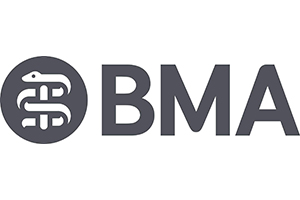BREAST AUGMENTATION REVISION
Breast augmentation revision (removal and replacement of breast implants) are carried out with you asleep under a general anaesthetic and usually requires a single night stay in hospital. If implants are removed without being replaced, this can sometimes be done as a day case procedure. Common reasons for exchanging implants include capsular contracture, implant rupture or patient choice to use a different size or shape implant. Implants can also be removed and not replaced if this is your wish.
The breast implants can normally be removed using your existing scars from your original surgery, and rarely need to be increased in size significantly. Once the implants are removed I will often either remove or release the scar tissue capsule which your body will have made around them to allow optimum positioning of any new implant (capsulectomy or capsulotomy). Any capsular tissue will be sent off for testing to ensure that there are no abnormal cells associated with the capsule. The space left is then washed with a warmed, sterile antibiotic infused solution and the new implants replaced and then the wounds will be carefully closed with a fine absorbable suture and dressed. Alternatively, if the implants are not being replaced then the wounds are simply closed after the implants have been removed.
Following the procedure you will be taken from the operating theatre into the recovery suite where you will be looked after until you are fully awake and any discomfort is well controlled. After this, you will return to your private room, where nursing staff will continue to check your pain control, observations (blood pressure / pulse) and dressings at regular intervals. We will also help you put your post-operative support bra on as soon as you are comfortable to do so.
We will prescribe painkillers for you to take home from the hospital, and you should take these regularly for the first few weeks, although this may vary slightly from patient to patient.
WHAT IS THE RECOVERY TIME?
After breast implant replacement you are likely to have some discomfort and swelling in your breasts. This will be temporary and any discomfort should subside after the first few weeks, although it often takes several months for the swelling to settle.
I recommend that patients wear a well fitted support bra for a minimum of six weeks after surgery, and will give you information about the style of bra which is most appropriate. This should be worn night and day, but can be removed for washing and showering. Many patients find the support bra very comfortable, and may continue to wear a similar bra in the future after surgery especially when undertaking exercise or sporting activities.
You will receive a post-operative telephone call from the specialist cosmetic nurse I work with a few days after your discharge from hospital to check you are well, and will normally meet them a week after surgery to perform a wound check and change your dressings. We will provide you with some post-operative wound support tape at this stage and encourage you to use this for the first six weeks to help support the wound whilst it is healing. I will normally meet you about two weeks after your operation to make a further check that all is well and then again about three months later to assess your outcome with you once all of your swelling has subsided.
During the early part of your recovery, you must avoid strenuous exercise, heavy lifting, swimming vacuuming and gardening, normally for a period of four to six weeks after surgery. You should only resume driving when you are confident that you can safely perform an emergency stop without experiencing discomfort, but for many patients this is possible after about two to three weeks. The length of time you will need to take off work will depend on your type of employment, and we can discuss this with you during your pre-operative consultation to allow you to plan timing of your surgery.
ARE THERE ANY RISKS/COMPLICATIONS?
Breast implant replacement is a commonly performed and generally safe procedure. However, all surgery carries an element of risk. The risks can include:
Bleeding and developing a collection of blood around the implant called a haematoma. If this were to happen it normally occurs in the first 24 to 48 hours after surgery and requires a second operation to remove this from around the implant. It is important to avoid any strenuous movements of lifting over this time for this reason. . It is also important to avoid taking anti-inflammatory pills (e.g. ibuprofen) or non-prescription medication for a week before and after surgery, as they can slightly increase the risks of bleeding too.
Implant infection may occur, and will almost always necessitate the removal of the implant for a period of time to allow the infection to be completely treated before replacing it. We will check for any signs of infection in the postoperative checks you have, and thankfully these are rare.
Developing a blood clot or DVT, usually in a vein in the lower leg. We will provide you with surgical stockings and lower limb compression devices to minimise the risk of this, as well as asking you to stop taking the pill or any HRT before surgery for one month.
Sensation changes in different parts of the breast including the nipple – these areas may become more or less sensitive than before.
Hypersensitivity will tend to settle over the months after surgery but occasionally numbness can be permanent.
Rippling and/or palpability – parts of the implant may be very easy to see or feel under your skin and or muscle, particularly if you are very slim. This can happen if a patient’s loses weight following their surgery, or if the implant used is too large, emphasising the reason for considering this carefully before your surgery.
Capsular Contracture may occur over time – this is when a layer of scar tissue forms around the implant causing the breast to feel hard and uncomfortable, and changing its shape. The implant and the scar tissue capsule may need to be removed and replaced.
Implant rupture is rare, but may occur after an implant has been inside the body for many years or following a direct blow to the chest wall area. When this happens some of the silicone may move slowly to the lymph nodes in the armpit area of your body causing them to enlarge and sometimes to feel uncomfortable. Most of the silicone will stay inside the scar tissue which forms around the implant and does not “leak out” into the body. It will require a further operation but is not known to put your health at risk.
Minor differences or asymmetry between your breasts after this surgery are inevitable, and most people will have a degree of difference between their breasts before their surgery even if they are not aware of it! This procedure will not produce a perfectly symmetrical outcome between your breasts, but the differences will be very minor and should not prevent you from getting clothing (including a bra) to fit comfortably.
Implant movement is common if the implant has been placed under the muscle on your chest wall, tending to occur during movement when that muscle would ordinarily contract. This movement will often settle in the months after your surgery but may occasionally be permanent.
Implants will not last forever despite what some patients have been told by surgeons previously. Patients undertaking this surgery should always expect to have further surgery in the future. This is most commonly for capsular contracture or a change in the appearance of their breasts, as their own breast tissue ages and changes in position relative to that of their implants.
Discussion with Jamie is important to answer any questions that you may have. For information about any additional conditions not featured within the site, please contact us for more information.









